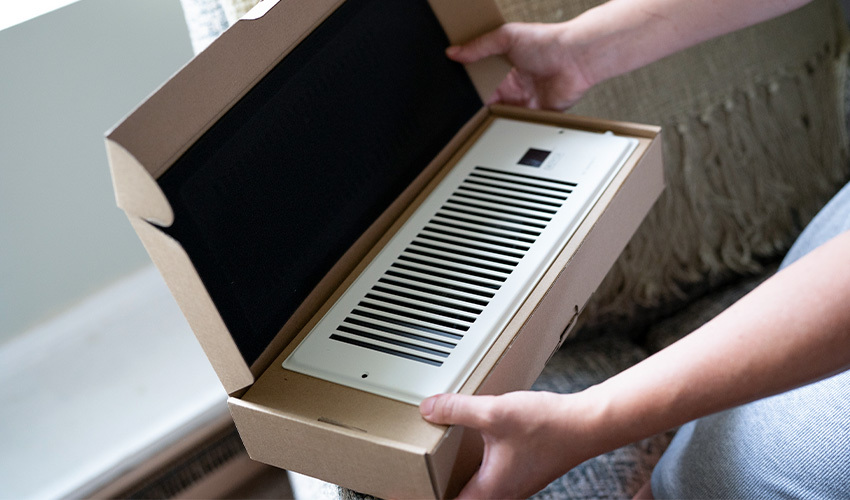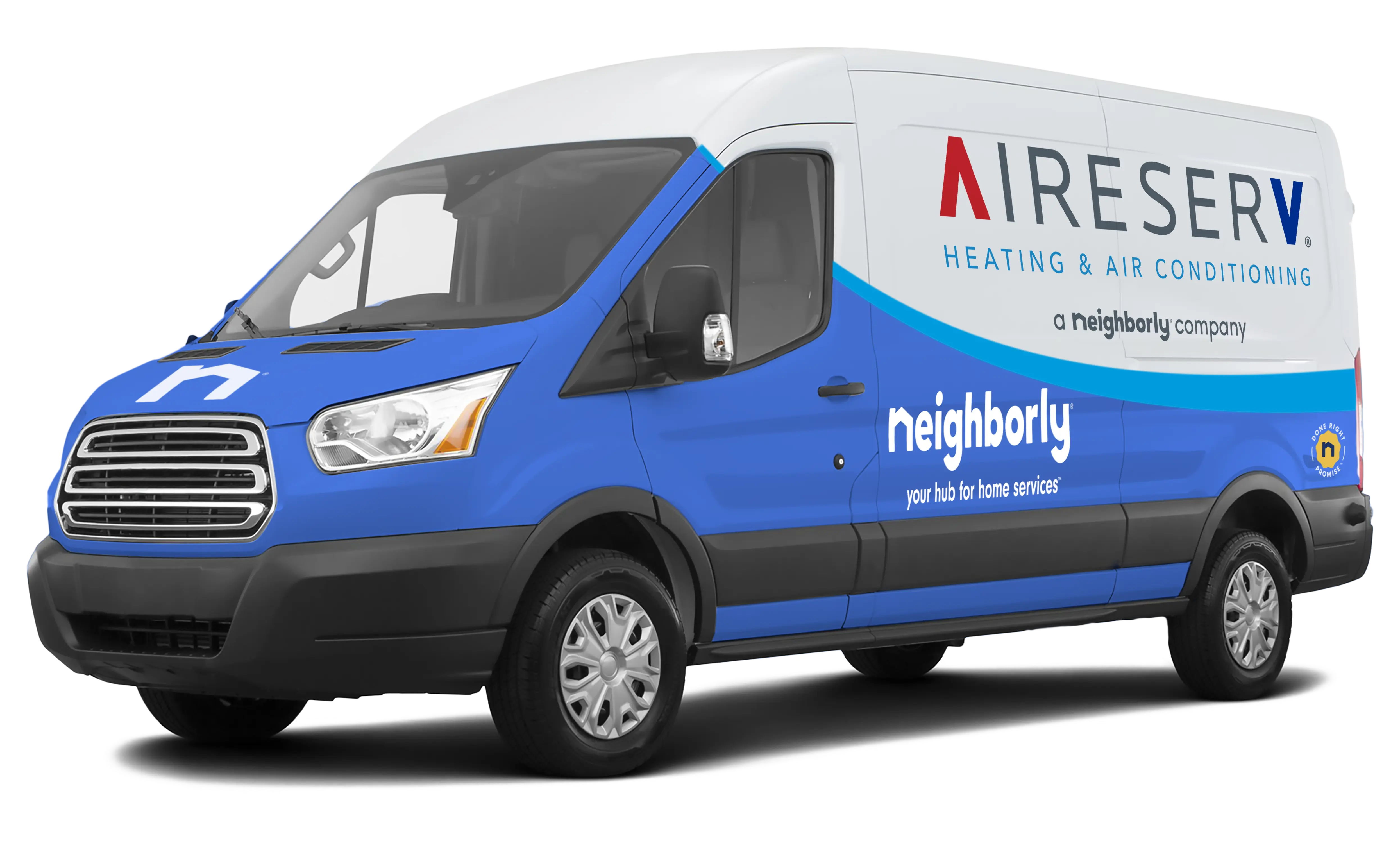
Aire Serv explains duct boosters and their effectiveness in improving airflow in HVAC systems.
- Identify rooms with poor airflow or temperature inconsistencies.
- Assess ductwork for blockages or leaks before installing a booster.
- Select the appropriate duct booster fan for your system.
- Install the booster fan according to manufacturer guidelines.
- Monitor airflow improvements and adjust as needed.
Temperature consistency from room to room is essential for overall home comfort. Chilly air in one spot and warm air in another indicates an HVAC airflow issue in your home.
If you’re experiencing uneven heating or cooling, you may have heard that a duct booster or air booster will solve the problem. So, do duct booster fans work? Well, they can certainly help ease the symptoms, but you’ll still need to address the source of your HVAC airflow problem.
If you’re considering adding a duct booster to your system, our experts share some valuable information that will help you decide if buying is right for you.
What Is a Duct Booster Fan?
A duct booster fan improves airflow in HVAC systems by pushing air through ducts, ensuring every room receives proper heating or cooling. It's akin to giving a gentle push-to-air movement. However, their effectiveness depends on proper installation and addressing any existing HVAC system issues. But do duct booster fans work?
How Do Duct Booster Fans Work?
Let’s start by answering the question: how do duct booster fans work? Duct booster fans enhance HVAC airflow by acting like turbo boosts inside HVAC ducts. When your main system struggles to push air to all rooms, these fans step in, ensuring each room receives proper warm or cool air. They're activated when your main system turns on and help balance temperatures to enhance overall comfort.
Do Duct Booster Fans Really Work?
The success of a duct booster fan hinges on proper installation, sizing, and addressing any existing HVAC issues. Are duct booster fans worth it for your home? The answer varies based on your comfort preferences. How cold do you want your home in the summer, and how warm do you want it to be during the winter months?
Do I Need an Air Duct Booster Fan?
Consider an air duct booster fan if certain rooms are much hotter or colder than others. These fans balance temperatures by enhancing airflow within your HVAC system. If uneven heating or cooling is evident, especially in distant rooms, installing a booster fan could help. However, a duct booster fan is not the answer in every situation, so before you make a final decision, prioritize professional system inspection to identify and address potential root problems. An inspection prior to installation will identify issues that could potentially resolve the problem or, at the very least, enhance the performance of a duct booster fan.
If it’s determined that a duct booster fan will help, installing duct booster fans should be done by a professional with experience in ductwork services.
When Are Duct Booster Fans a Good Option?
Duct booster fans are a good option when some rooms are too hot or cold compared to others. If your heating or cooling system struggles to distribute air evenly, a duct booster fan can help improve airflow throughout the system and your home.
Where Should Duct Booster Fans Be Placed?
Duct booster fans should be placed in the ducts of your heating, ventilation, and air conditioning (HVAC) system. They're typically installed in areas with poor airflow, like long or complex duct runs or rooms that don't get enough air from your system. Proper placement ensures better distribution of the hot or cold air your system generates.
What Are the Pros and Cons of Duct Booster Fans?
Duct booster fans can help even out room temperatures by improving airflow. Pros include better overall comfort throughout your home and improved energy efficiency. If your system doesn’t have to operate as long or work as hard to heat or cool certain rooms in your home, your system will operate more efficiently.
A few cons of a duct booster are that they won’t fix underlying HVAC issues, such as damaged or leaky ducts. Also, improper installation could lead to noisier operation of your system or inefficient performance of the booster. This is why it's important to assess your specific needs and consult a professional before making a final decision on an installation.
What Are the Different Types of Booster Fans?
Before installing duct booster fans, it’s important to understand your options. There are two main types of duct booster fans: inline and register fans. Inline fans fit inside the ductwork and boost airflow throughout the system. Register fans are placed on the floor or wall vents and direct air into a room. Both types aim to improve the distribution of warm and cool air and improve ventilation.
How to Choose the Right Duct Booster Fan
An HVAC professional will help you choose the right duct booster fan based on the size and layout of your home, the location of your airflow issues, and the type of HVAC system you have. A professional will also measure duct dimensions to determine the exact size and power duct booster you need while ensuring minimal noise output.
Duct Booster Fans vs. Other Solutions
Duct booster fans can help improve air circulation in specific cases, but they're not always the best solution. Addressing underlying HVAC problems, like blocked vents or duct leaks, might be more effective and could be the answer to your air distribution problems. Consult a local HVAC professional to diagnose the issue and guide you to the right solution for better home comfort.
How Much Does a Duct Booster Fan Cost
The cost of a duct booster fan varies based on factors like brand, type, and size. On average, they can range from around $30 to $200 or more. It's important to factor in installation costs if you're not comfortable doing it yourself. Consider it an investment in improving your home's comfort, system performance, and energy efficiency.
Take Charge of Your HVAC System with Aire Serv®
You and your family deserve an HVAC system that keeps your entire home comfortable all year long. No more bundling up with blankets for rooms that are too cold or sitting in front of a fan because the room is too warm. If you’re ready to address the problem of uneven heating and cooling in your home, your local Aire Serv team is ready to help. Call or request an appointment online to get started. Rest assured, you made the right choice because all our work is backed by the Neighborly Done Right Promise®, which guarantees your satisfaction with our work.
This article is intended for general informational purposes only and may not be applicable to every situation. You are responsible for determining the proper course of action for your home and property. Aire Serv is not responsible for any damages that occur as a result of this blog content or your actions. For the most accurate guidance, contact the Aire Serv location nearest you for a comprehensive, on-site assessment.
FAQs About Duct Boosters
As an industry leader and a brand that is trusted by homeowners and businesses nationwide for our knowledge and experience, we’re happy to answer your HVAC questions. Here are answers to some of the frequently asked questions about duct booster fans.
Do vent fans really work?
Yes, vent fans really do work when properly sized and installed for their intended purpose. They improve air quality by removing stale air, pollutants, odors, and excess moisture from indoor spaces. This helps prevent the growth of mold and mildew, reduces humidity, and can even improve the efficiency of your HVAC system by circulating air more effectively.
Why might I need an air conditioning booster fan in a duct?
Several common scenarios may make a ventilation booster fan a smart choice:
- Rooms that are consistently too hot or too cold: If certain rooms in your home never seem to receive adequate heating or cooling, even when the rest of the house is comfortable, an HVAC vent fan in the supply duct leading to those rooms might be the solution.
- Long or complex duct runs: In homes with sprawling layouts or ductwork that takes many twists and turns, airflow can diminish significantly by the time it reaches the furthest vents. A duct fan booster can help overcome this friction and pressure loss.
- Weak airflow from specific vents: If you notice a noticeable lack of air coming from particular vents, even when the system is running at full capacity, an air conditioner booster fan can provide the necessary boost.
- Balancing airflow throughout the house: If one area of the house receives too much airflow while others suffer, a floor vent booster fan can help redistribute the air more evenly, improving overall comfort.
- Improving the efficiency of the HVAC system (indirectly): By ensuring conditioned air reaches all areas effectively, your thermostat is less likely to overcompensate, potentially leading to slight energy savings.
- Basement or attic conversions: When converting previously unfinished spaces, the existing ductwork might not be designed to deliver sufficient airflow to the new living areas. A booster fan can help extend the reach of the HVAC system.
Do register booster fans work?
Register booster fans can offer a noticeable improvement in airflow to rooms with weak registers by actively pulling conditioned air. They are particularly helpful for balancing temperatures in homes with uneven heating and cooling.
However, they don't address underlying HVAC issues like duct leaks or undersized systems and might slightly increase energy consumption. Their effectiveness varies depending on the specific situation and the quality of the fan. If further air duct repairs or replacements are needed, contact an HVAC professional to address the root of the issue.
When are duct booster fans a good solution?
Duct booster fans can be a helpful solution in specific situations:
- Minor airflow imbalances: When a room is consistently slightly warmer or cooler than others due to minor pressure losses in the ductwork.
- Supplementing existing airflow: To provide an extra push to a room that already receives some airflow but could benefit from more.
- Cost-effective short-term fix: As a more affordable alternative to extensive ductwork modifications, especially in older homes where alterations might be difficult or expensive.
If your HVAC system experiences regular imbalances in airflow, consider routine HVAC inspections and maintenance through an Aire Serv Advantage Plan Membership.
How to select the right size and type of duct booster fan?
Selecting the right booster fan involves considering several factors:
- Duct size: The fan must match the diameter or dimensions of your ductwork for a secure and airtight fit.
- Airflow requirements (CFM): Consider the fan’s cubic feet per minute (CFM) rating. A higher CFM indicates a greater volume of air moved. Choose a fan with sufficient CFM to make a noticeable difference in the targeted room.
- Noise level (dB): Check the decibel (dB) rating of the fan, especially if noise is a concern. Lower dB values indicate quieter operation.
- Control mechanism: Decide whether you prefer a manual, thermostatically controlled, or pressure-sensing fan based on your needs and energy efficiency goals.
- Power source: Ensure the fan's voltage and power requirements are compatible with your electrical system.
- Build quality and durability: Look for fans made from sturdy materials with good reviews regarding reliability.
What are some alternatives to duct booster fans?
While booster fans can help address uneven airflow issues, consider addressing the root causes of poor airflow.
- HVAC system maintenance: Ensure your furnace and air conditioner are clean, properly maintained, and functioning efficiently. Replace air filters regularly.
- Ductwork inspection and sealing: Have your ductwork professionally inspected for leaks and seal any found with mastic sealant or metal tape.
- Duct cleaning: If your ducts are heavily contaminated with dust and debris, professional cleaning can improve airflow.
- Balancing dampers: Adjusting the balancing dampers in your ductwork can help regulate airflow to different zones.
- Professional HVAC assessment: Consult with an HVAC service professional for a residential air duct inspection, repair, or replacement.
- Zoned HVAC system: For significant and persistent uneven temperature issues, consider installing a zoned HVAC system.

